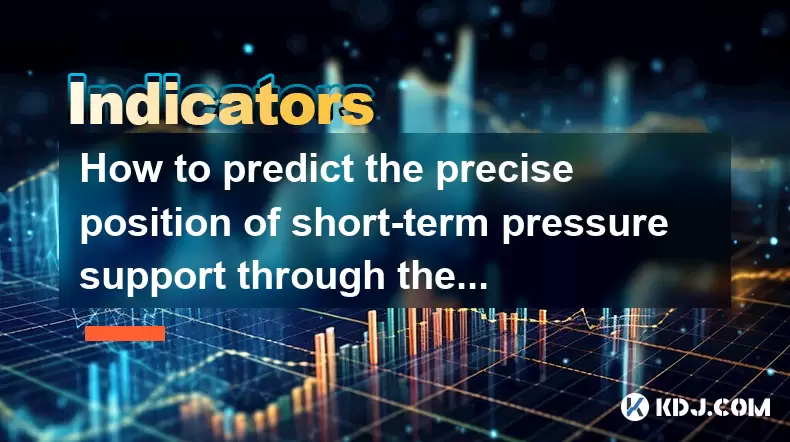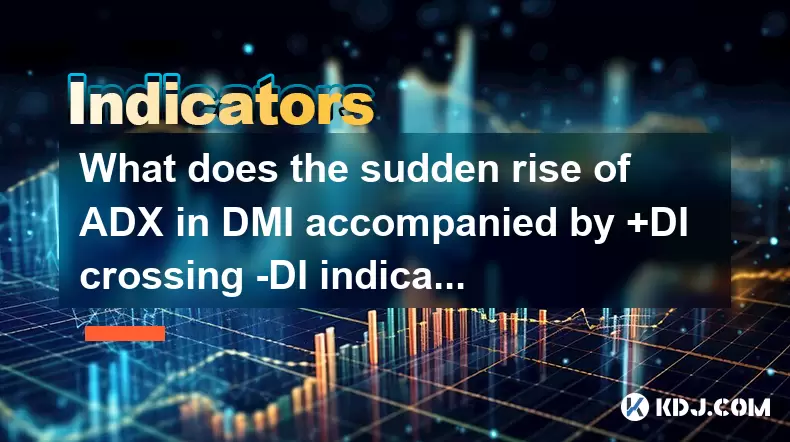-
 Bitcoin
Bitcoin $116900
-1.92% -
 Ethereum
Ethereum $3655
-2.43% -
 XRP
XRP $3.093
-4.38% -
 Tether USDt
Tether USDt $1.000
-0.01% -
 BNB
BNB $776.8
-0.50% -
 Solana
Solana $182.5
-3.18% -
 USDC
USDC $1.000
0.01% -
 Dogecoin
Dogecoin $0.2287
-4.43% -
 TRON
TRON $0.3155
0.17% -
 Cardano
Cardano $0.7984
-2.54% -
 Hyperliquid
Hyperliquid $43.05
0.67% -
 Sui
Sui $3.849
0.16% -
 Stellar
Stellar $0.4215
-2.84% -
 Chainlink
Chainlink $17.83
-3.09% -
 Hedera
Hedera $0.2553
4.41% -
 Bitcoin Cash
Bitcoin Cash $540.3
4.62% -
 Avalanche
Avalanche $23.51
-2.54% -
 Litecoin
Litecoin $111.8
-1.52% -
 UNUS SED LEO
UNUS SED LEO $8.984
0.11% -
 Shiba Inu
Shiba Inu $0.00001370
-1.24% -
 Toncoin
Toncoin $3.145
-0.85% -
 Ethena USDe
Ethena USDe $1.001
-0.04% -
 Polkadot
Polkadot $4.014
-1.63% -
 Uniswap
Uniswap $10.17
-2.84% -
 Monero
Monero $323.8
0.43% -
 Dai
Dai $1.000
0.01% -
 Bitget Token
Bitget Token $4.509
-2.87% -
 Pepe
Pepe $0.00001220
-4.37% -
 Aave
Aave $290.9
-0.67% -
 Cronos
Cronos $0.1286
0.99%
주문 데이터를 통해 단기 압력 지원의 정확한 위치를 예측하는 방법은 무엇입니까?
주문 데이터 분석은 주문서에서 클러스터와 볼륨을 식별하여 거래 결정을 강화하여 암호화 거래의 단기 압력 및 지원을 예측하는 데 도움이됩니다.
2025/06/12 22:49

암호 화폐 거래에서 단기 압력 및 지원 이해
cryptocurrency 거래의 세계에서, 단기 압력과 지원 수준은 신속하고 수익성있는 결정을 내려는 거래자에게 중요합니다. 이 수준은 cryptocurrency의 가격이 저항 (압력)에 직면하거나 기본 (지원)을 찾을 수있는 지점을 나타냅니다. 이러한 수준을 정확하게 예측하면 트레이더가 낮게 구매하고 높은 판매 능력을 크게 향상시킬 수 있습니다. 이러한 수준을 예측하는 효과적인 방법 중 하나는 주문 데이터 분석을 통한 것입니다. 이는 다른 시장 참가자의 구매 및 판매 의도에 대한 통찰력을 제공합니다.
주문 데이터는 무엇입니까?
주문 데이터는 Cryptocurrency 거래소에 배치 된 구매 및 판매 주문에 대한 정보를 말합니다. 이 데이터에는 다양한 가격 수준의 주문 수, 이러한 주문의 양 및 기타 관련 메트릭이 포함됩니다. 주문 데이터를 조사함으로써 거래자는 상당한 구매 또는 판매 압력이 발생할 수있는 곳을 더 명확하게 얻을 수 있으므로 단기 압력 및 지원 수준을 예측하는 데 도움이됩니다.
주문 데이터 수집 및 분석
단기 압력 및 지원 수준을 예측하기 위해 트레이더는 선택한 암호 화폐 거래소에서 주문 데이터를 수집하고 분석해야합니다. 다음은 다음과 같은 방법입니다.
- 주문서 액세스 : 대부분의 cryptocurrency 거래소는 현재 구매 및 판매 주문을 모두 표시하는 주문서를 제공합니다. 이것은 일반적으로 거래소의 거래 인터페이스 내에서 찾을 수 있습니다.
- 데이터 내보내기 : 일부 교환을 통해 CSV와 같은 형식으로 주문서 데이터를 내보낼 수 있습니다. 이 옵션을 사용할 수있는 경우 더 자세한 분석을 위해 사용하십시오.
- 거래 도구 사용 : 다양한 거래 플랫폼과 도구는 주문 데이터 수집 및 분석 프로세스를 자동화하는 데 도움이 될 수 있습니다. Python의 TradingView 또는 사용자 정의 스크립트와 같은 도구는 특히 유용 할 수 있습니다.
주문 데이터에서 주요 레벨을 식별합니다
순서 데이터가 수집되면 다음 단계는 단기 압력 또는지지로 작용할 수있는 주요 레벨을 식별하는 것입니다. 다음은 다음과 같은 방법입니다.
- 클러스터 찾기 : 특정 가격 지점에서 주문 클러스터는 잠재적 압력 또는 지원 수준을 나타낼 수 있습니다. 특정 가격으로 다수의 구매 주문은 강력한 지원을 암시하는 반면, 판매 주문은 잠재적 저항을 나타냅니다.
- 주문량 분석 : 다른 가격 수준의 주문량은 또 다른 중요한 요소입니다. 많은 양이 높을수록 가격이 해당 수준에서 반응 할 가능성이 더 강합니다.
- 입찰 스프레드를 확인하십시오 : 입찰 스프레드는 또한 단서를 제공 할 수 있습니다. 좁은 스프레드는 특정 가격 수준에서 강력하고 즉각적인 반응을 시사 할 수 있지만, 더 넓은 스프레드는 즉각적인 압력을 줄일 수 있습니다.
실제 예 : 주문 데이터를 사용하여 단기 수준을 예측합니다
순서 데이터를 사용하여 단기 압력 및 지원 수준을 예측하는 방법을 설명하기 위해 실용적인 예를 살펴 보겠습니다. 인기있는 거래소에서 Bitcoin 거래 중이며 다음 몇 시간 내에 가격이 저항에 직면하거나 지원을 찾을 수있는 위치를 예측하고 싶다고 가정 해 봅시다.
- 1 단계 : 주문서 액세스 : 선택한 교환에서 거래 인터페이스를 열고 주문서 섹션을 찾으십시오.
- 2 단계 : 클러스터 식별 : 주문서를 스크롤하고 구매 및 판매 주문의 중요한 클러스터를 기록하십시오. 예를 들어, 많은 구매 주문이 $ 30,000에, 상당수의 판매 주문은 $ 30,500에 표시 될 수 있습니다.
- 3 단계 : 주문 볼륨 분석 :이 클러스터 레벨에서 주문량을 확인하십시오. $ 30,000에 1,000 달러의 구매 주문이 있고 $ 30,500에 800 개의 판매 주문이 있다면,이 수준은 훨씬 더 중요해집니다.
- 4 단계 : 입찰 스프레드를 고려하십시오 . 이러한 수준 주위에 입찰 스프레드를 살펴보십시오. 스프레드가 30,000 달러로 좁고 30,500 달러로 넓어지면 30,000 달러가 강력한 지원 수준으로 작용할 수 있지만 30,500 달러는 저항 수준이 될 수 있음을 시사합니다.
- 5 단계 : 예측 :이 분석을 바탕으로 Bitcoin는 단기적으로 30,000 달러에 강한 지원을 받고 단기적으로 $ 30,500의 얼굴 저항을 찾을 수 있다고 예측할 수 있습니다.
기술 지표를 사용하여 주문 데이터를 보완합니다
주문 데이터는 귀중한 통찰력을 제공하지만 기술 지표 와 결합하면 예측의 정확성을 향상시킬 수 있습니다. 다음은 주문 데이터와 함께 사용할 수있는 몇 가지 지표입니다.
- 이동 평균 : 이동 평균은 주문 데이터를 통해 식별 된 잠재적 지원 및 저항 수준을 확인하는 데 도움이 될 수 있습니다.
- 상대 강도 지수 (RSI) : RSI는 cryptocurrency가 과출하거나 과매도인지를 나타낼 수 있으며, 이는 식별 된지지 및 저항 수준의 효과에 영향을 줄 수 있습니다.
- BOLLINGER BANDS : BOLLINGER BANDS는 주문 데이터에서 식별 된 주요 수준을 중심으로 잠재적 변동성과 가격 변동을 강조 할 수 있습니다.
예측 모니터링 및 조정
단기 압력 및 지원 수준을 예측하는 것은 지속적인 프로세스입니다. 시장 조건이 변함에 따라 주문 데이터도 변경됩니다. 따라서 다음이 필수적입니다.
- 주문서 모니터링 : 예측에 영향을 줄 수있는 새로운 클러스터 또는 볼륨 변경에 대해서는 주문서를 지속적으로 확인하십시오.
- 분석 조정 : 새로운 데이터 및 시장 개발에 따라 예측을 조정하도록 준비하십시오.
- 다른 데이터와 결합하십시오 . 다른 시장 데이터 및 뉴스를 사용하여 주문 데이터를 기반으로 예측을 검증하십시오.
FAQ
Q1 : 대규모 거래자가 주문 데이터를 다른 사람을 오도하도록 주문할 수 있습니까?
A1 : 그렇습니다. 대규모 거래자는 때때로 특정 가격 수준에서 큰 주문을 할 수있어 지원 또는 저항에 대한 잘못된 인상을줍니다. 이 연습은 '스푸핑'이라고합니다. 이 가능성을 알고 다른 지표를 사용하여 주문 데이터에서 결과를 검증하는 것이 중요합니다.
Q2 : 주문 데이터 분석을 얼마나 자주 업데이트해야합니까?
A2 : 거래 전략과 시장의 변동성에 달려 있습니다. 단기 거래의 경우 몇 시간 또는 더 자주 분석을 업데이트하는 것이 유리할 수 있습니다. 휘발성이 적은 시장의 경우 매일 업데이트로 충분할 수 있습니다.
Q3 : 주문 데이터 분석은 모든 유형의 암호 화폐에 적합합니까?
A3 : 주문 데이터 분석은 주문서를 제공하는 교환에서 거래되는 암호 화폐에 적용될 수 있습니다. 그러나 효율성은 특정 암호 화폐의 유동성과 거래량에 따라 다를 수 있습니다.
Q4 : 장기 거래에 주문 데이터 분석을 사용할 수 있습니까?
A4 : 주문 데이터는 단기 거래에 특히 유용하지만 장기 거래 결정에도 도움이 될 수 있습니다. 그러나 장기 예측을 위해서는 주문 데이터와 광범위한 시장 분석 및 기본 요소를 결합하는 것이 중요합니다.
부인 성명:info@kdj.com
제공된 정보는 거래 조언이 아닙니다. kdj.com은 이 기사에 제공된 정보를 기반으로 이루어진 투자에 대해 어떠한 책임도 지지 않습니다. 암호화폐는 변동성이 매우 높으므로 철저한 조사 후 신중하게 투자하는 것이 좋습니다!
본 웹사이트에 사용된 내용이 귀하의 저작권을 침해한다고 판단되는 경우, 즉시 당사(info@kdj.com)로 연락주시면 즉시 삭제하도록 하겠습니다.
- UAE의 디지털 자산 혁명 : Stablecoin 규정이 중심에 있습니다
- 2025-07-26 10:40:11
- Virtual Weekly Drop : 복구 분석 및 개인 정보 푸시
- 2025-07-26 08:50:11
- Bitcoin, Cynthia Lummis 및 Freedom Money : New Yorker 's Take
- 2025-07-26 08:30:11
- Pudgy Penguins, Crypto Price 및 Altseason Buzz : 과대 광고는 무엇입니까?
- 2025-07-26 10:51:48
- Crypto Gainers, Top 10, 30 주 : Altcoins Buck the Trend
- 2025-07-26 08:55:12
- Solana, Altcoins 및 Coinbase : Buzz는 무엇입니까?
- 2025-07-26 06:30:12
관련 지식

이동 평균이 처음으로 짧은 위치로 배열 된 후 반동이 차단된다는 것은 무엇을 의미합니까?
2025-07-26 10:51:10
단기 이동 평균 구성 이해 거래자가 이동 평균에서 '짧은 포지션 배열'을 언급 할 때, 단기 이동 평균이 장기적으로 교차하는 기술 설정을 설명하고 있습니다. 이 구성은 일반적으로 약세 추세를 나타냅니다. 예를 들어, 5주기 이동 평균 (MA) 이 10- ...

5 일 연속 5 일간의 이동 평균을 따라 가격이 상승하면 무엇을 의미합니까?
2025-07-26 08:07:37
암호 화폐 거래에서 5 일 이동 평균 이해 5 일 이동 평균 (5DMA) 은 Cryptocurrency 거래에서 널리 사용되는 기술 지표로 지난 5 일 동안 자산의 평균 종가를 계산합니다. 거래자는이 메트릭을 사용하여 단기 가격 변동을 부드럽게하고 기본 추세를 식별합니...

가격이 60 일의 이동 평균을 크게 볼 수 있지만 다음날 축소 될 때란 무엇을 의미합니까?
2025-07-26 06:01:03
암호 화폐 거래에서 60 일 이동 평균 이해 60 일 이동 평균 (60DMA) 은 Cryptocurrency 시장에서 널리 사용되는 기술 지표로 지난 60 일 동안 가격 데이터를 부드럽게합니다. 거래자가 단기 가격 변동을 필터링하여 전반적인 추세 방향을 식별하는 데 도...

+di crossing -di와 함께 DMI에서 ADX의 갑작스런 상승은 무엇을 나타 냅니까?
2025-07-26 13:21:19
DMI 및 핵심 구성 요소 이해 DMI (Directional Movement Index)는 암호 화폐 가격 변동의 추세의 존재와 강도를 결정하는 데 사용되는 기술 분석 도구입니다. 세 가지 주요 구성 요소의 평균 방향 지수 (ADX) , 양의 방향 지표 (+DI) 및...

Apver가 새로운 최고치를 계속 쳤을 때 가격은 정체 될 때 무엇을 의미합니까?
2025-07-26 09:57:50
균형 대량 (Obver) 표시기 이해 OBT (On-Balance Volume)는 볼륨 흐름을 사용하여 재고 또는 암호 화폐 가격의 변화를 예측하는 기술적 분석 표시기입니다. Joe Granville이 개발 한 Obver는 간단한 전제로 운영됩니다. 계산은 간단합니다....

EMA12와 EMA26의 골든 크로스는 무엇을 반영하지만 낮은 거래량은 무엇입니까?
2025-07-26 06:44:03
EMA12 및 EMA26의 황금 십자가 이해 Golden Cross 는 암호 화폐 시장에서 널리 알려진 기술 지표로 잠재적 인 낙관적 인 반전을 나타냅니다. 12 주 지수 이동 평균 (EMA12) 이 26 기 지수 이동 평균 (EMA26)을 넘을 때 발생합니다. 이 패...

이동 평균이 처음으로 짧은 위치로 배열 된 후 반동이 차단된다는 것은 무엇을 의미합니까?
2025-07-26 10:51:10
단기 이동 평균 구성 이해 거래자가 이동 평균에서 '짧은 포지션 배열'을 언급 할 때, 단기 이동 평균이 장기적으로 교차하는 기술 설정을 설명하고 있습니다. 이 구성은 일반적으로 약세 추세를 나타냅니다. 예를 들어, 5주기 이동 평균 (MA) 이 10- ...

5 일 연속 5 일간의 이동 평균을 따라 가격이 상승하면 무엇을 의미합니까?
2025-07-26 08:07:37
암호 화폐 거래에서 5 일 이동 평균 이해 5 일 이동 평균 (5DMA) 은 Cryptocurrency 거래에서 널리 사용되는 기술 지표로 지난 5 일 동안 자산의 평균 종가를 계산합니다. 거래자는이 메트릭을 사용하여 단기 가격 변동을 부드럽게하고 기본 추세를 식별합니...

가격이 60 일의 이동 평균을 크게 볼 수 있지만 다음날 축소 될 때란 무엇을 의미합니까?
2025-07-26 06:01:03
암호 화폐 거래에서 60 일 이동 평균 이해 60 일 이동 평균 (60DMA) 은 Cryptocurrency 시장에서 널리 사용되는 기술 지표로 지난 60 일 동안 가격 데이터를 부드럽게합니다. 거래자가 단기 가격 변동을 필터링하여 전반적인 추세 방향을 식별하는 데 도...

+di crossing -di와 함께 DMI에서 ADX의 갑작스런 상승은 무엇을 나타 냅니까?
2025-07-26 13:21:19
DMI 및 핵심 구성 요소 이해 DMI (Directional Movement Index)는 암호 화폐 가격 변동의 추세의 존재와 강도를 결정하는 데 사용되는 기술 분석 도구입니다. 세 가지 주요 구성 요소의 평균 방향 지수 (ADX) , 양의 방향 지표 (+DI) 및...

Apver가 새로운 최고치를 계속 쳤을 때 가격은 정체 될 때 무엇을 의미합니까?
2025-07-26 09:57:50
균형 대량 (Obver) 표시기 이해 OBT (On-Balance Volume)는 볼륨 흐름을 사용하여 재고 또는 암호 화폐 가격의 변화를 예측하는 기술적 분석 표시기입니다. Joe Granville이 개발 한 Obver는 간단한 전제로 운영됩니다. 계산은 간단합니다....

EMA12와 EMA26의 골든 크로스는 무엇을 반영하지만 낮은 거래량은 무엇입니까?
2025-07-26 06:44:03
EMA12 및 EMA26의 황금 십자가 이해 Golden Cross 는 암호 화폐 시장에서 널리 알려진 기술 지표로 잠재적 인 낙관적 인 반전을 나타냅니다. 12 주 지수 이동 평균 (EMA12) 이 26 기 지수 이동 평균 (EMA26)을 넘을 때 발생합니다. 이 패...
모든 기사 보기

























































































